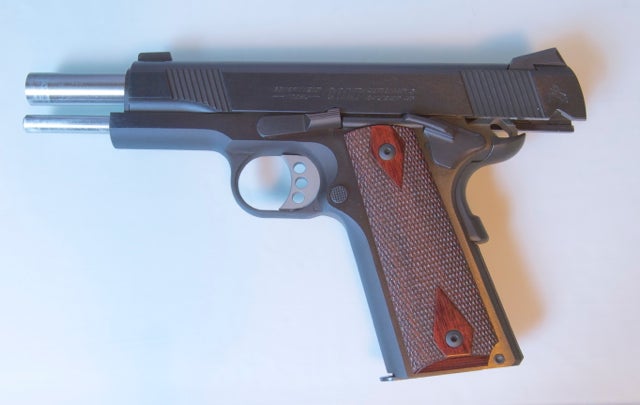I don't do it, and have never heard anyone recommend doing so.
One of the main causes of "slam fires" is having the "booger hook on the bang switch" and reflexively tightening the grip when the slide slams home thereby firing the gun -- its not just a 1911 thing. But by having the trigger "pulled" before chambering a round from slide lock would make it behave exactly as it does when shooting. Maybe with a high dollar, super light, borderline unsafe trigger job it'd be worthwhile, but I'd worry about being late with the squeeze and firing the gun negligently.
I think having the fingers out of the trigger guard when chambering a round is by far the better course of action, and the only thing I've ever seen taught.


